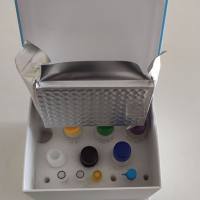Cellular heterogeneity of malignant tissues is a well-known phenomenon (1 ). Intralineal/intraclonal diversity may be explained in part by proposing the concept of a hierarchically ordered, differentiating and self-renewing stem cell system for transformed cell populations (2 ). However, in many solid tumors, the stem cells are not easily accessible to phenotypic identification. In the past, density gradient centrifugation was successfully used to separate cells from tumors and from cell lines into distinct subpopulations (3 -5 ). Using Percoll density gradients, we isolated undifferentiated clonogenic tumor stem-cell fractions from HOC-7 human ovarian adenocarcinoma cells. In addition, we also identified a low-density cell subpopulation formed by large, vacuolated, slowly growing, adenoid differentiated cells with very low clonogenic activity (6 -11 ). Further characterization of these cell fractions in terms of stability of the isolated phenotypes is essential for the assessment of their biological significance. Subcloning of the isolated cell fractions by limiting dilution culture (12 ) followed by long-term culture yielded three permanent monoclonal sublines, which reveal a stable adenoid differentiated phenotype, and three subclones representing undifferentiated, clonogenic tumor stem cells (13 ). These data demonstrate that the isolated phenotypes represent distinct cell entities reflecting specific stages of ovarian surface epithelial cell differentiation.






